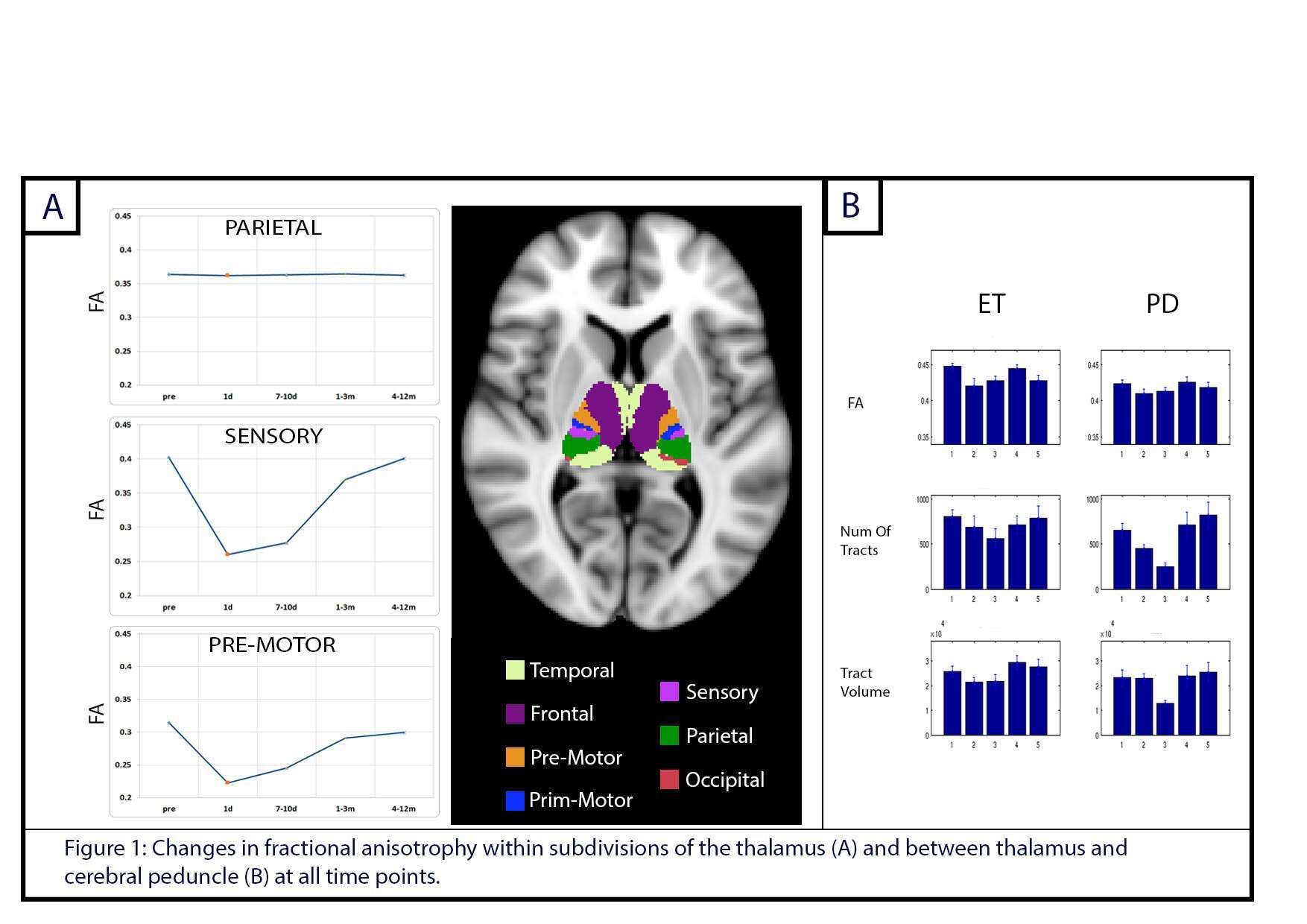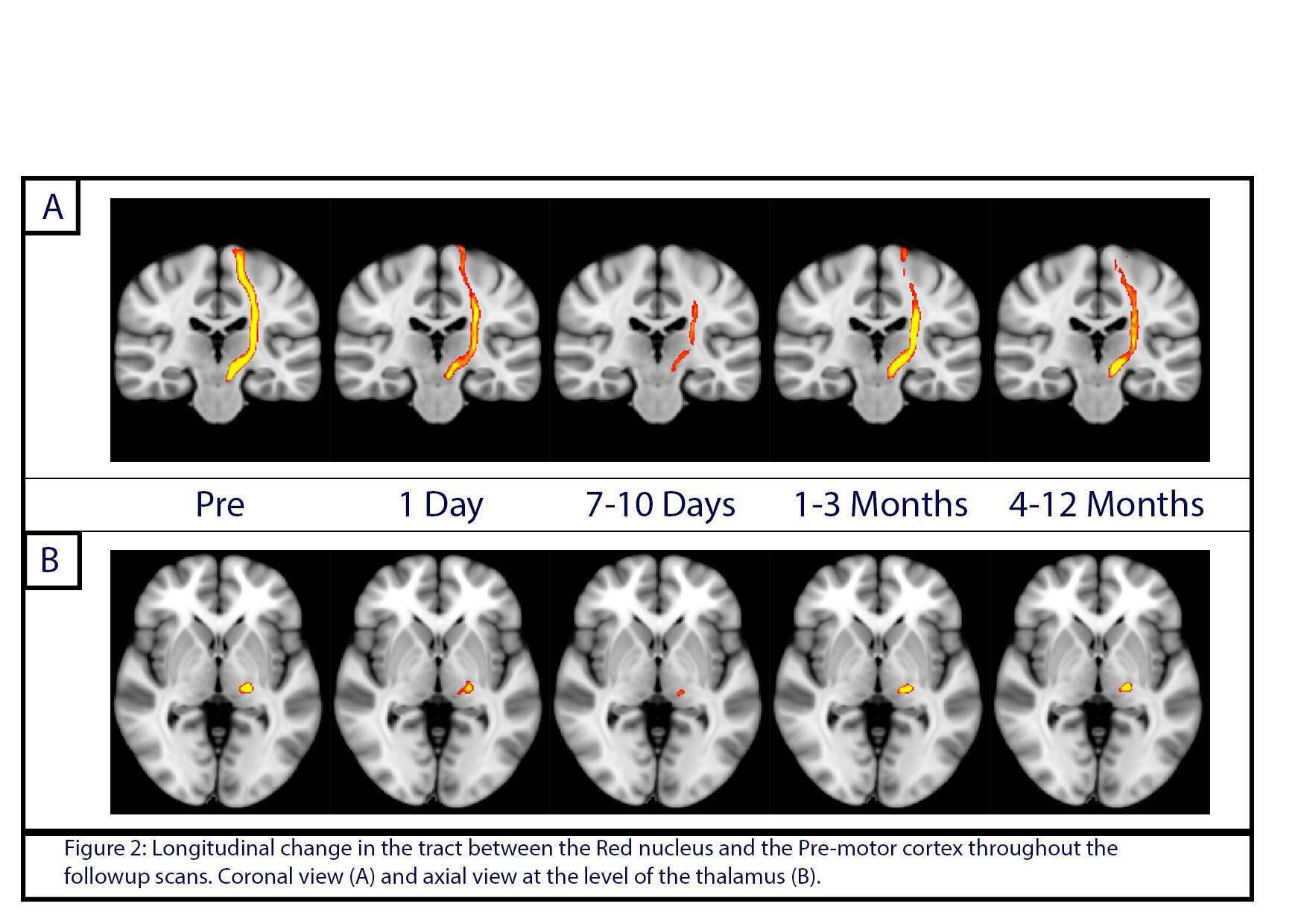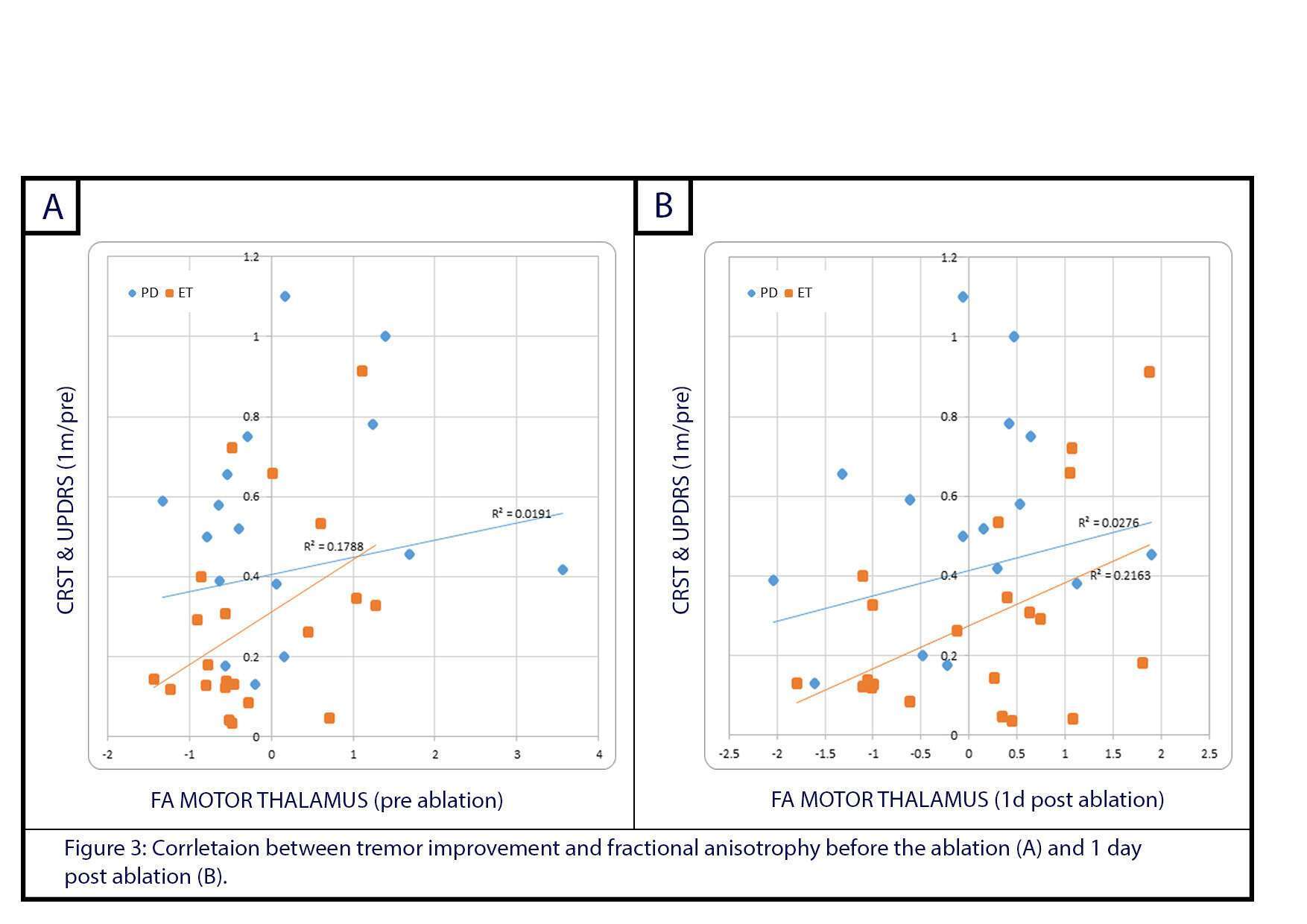Purpose: Magnetic resonance guided focused ultrasound (MRgFUS) for thermal ablation of ventral intermediate nucleus (VIM) of the thalamus is a new, noninvasive treatment of tremor disorders. This procedure has been proven as clinically safe and effective and has been shown to elicit changes in white matter (WM). Using diffusion tensor imaging (DTI) we studied white matter integrity of motor pathways before and following treatment with MRgFUS in patients with essential tremor (ET) or Parkinson’s disease (PD). We hypothesized that alterations in WM integrity will correlate with clinical outcome, thus serving as a biomarker that could be used to improve treatment success rates and patients selection.
Material & Methods: The study included 39 patients, 22 with a diagnosis of ET, and 17 with PD. DTI at 3.0T was performed before the ablation and a day, week, month, and a year following ablation. DTI data were processed, diffusivity parameters were calculated and fiber tractography measures were extracted using ExploreDTI. CRST and UPDRS scores were used to evaluate tremor improvement in ET and PD patients, respectively. FA changes were tested for correlation with clinical outcome.
Results: In both patient groups, a significant decrease in diffusivity parameters was seen in the sensory-motor subdivisions of the ablated thalamus at early follow-up scans. Complete or near complete recovery was demonstrated in the late follow-up scans (Figure 1A). A similar pattern of decline and recovery in diffusivity measures was seen among regions of interest of the dentato-red nucleus-cortical tract (Figure 1B). Fiber tractography of the whole tract demonstrated a consistent pattern (Figure 2). A statistically significant positive correlation (r=0.46,P<0.03) was found between the FA level in the motor thalamus a day following ablation and the clinical outcome (tremor improvement) in the ET group but not in the PD group (Figure 3A). A high FA level in the motor thalamus in the pre-ablation scan was associated (r=0.43,P<0.05) with unfavorable clinical outcome (Figure 3B).
Conclusion: Our results show that MRgFUS thalamotomy causes decline followed by recovery of WM diffusivity both within the thalamus and in distant motor areas. We found that FA values within the thalamus at baseline and a day post-ablation are correlated to the clinical outcome of ET patients but less so in the PD patients. Based on these results, we would like to propose that baseline FA values within the thalamus may predict treatment succes rates and may be used for better patient selection.




